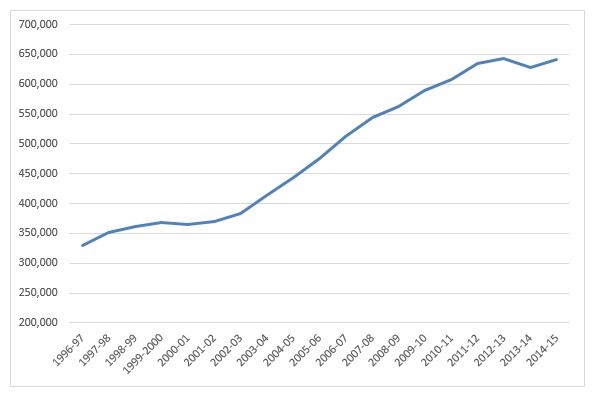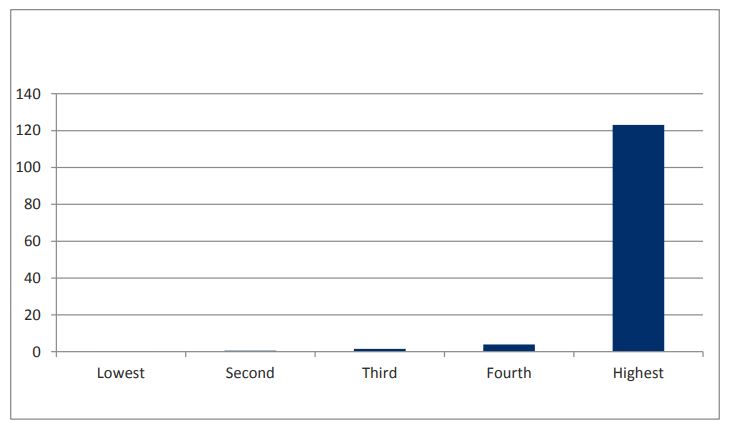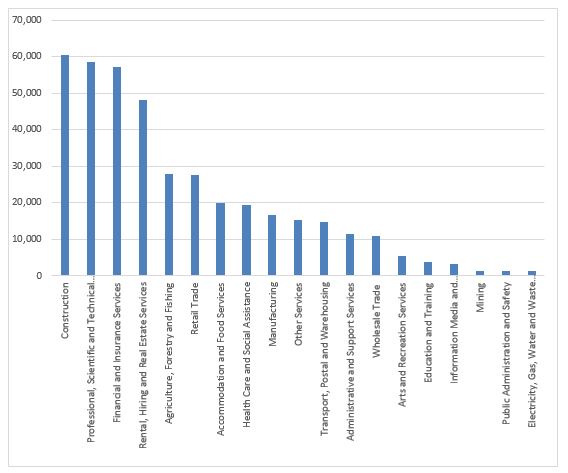ACOSS policy briefing, November 2017
Download in PDF | Download in Word
This briefing outlines how trusts are used by people to avoid paying tax, and what can be done to prevent this
The tax system should raise sufficient revenue to enable governments to meet the community’s reasonable needs for benefits, services and public infrastructure. A tax system that supports growth, investment and productivity will also help strengthen the tax revenue base for future generations.
Private trusts, along with super, negative gearing, and loopholes in Capital Gains Tax, are popular ways for people with higher incomes – and their well-paid financial advisers – to avoid paying tax.
Tax avoidance through trusts means the rest of us must contribute more in order to fund essential services.
It is unacceptable that while most people pay income tax at their marginal rate, a minority can use private trusts and companies to avoid paying their fair share.
Some private trusts do have legitimate purposes (for example, to hold and accumulate assets on behalf of a family member with a disability or to raise money for charity).
This is not about ‘abolishing’ trusts; it’s about fair taxation. People should pay tax at their proper marginal tax rate, rather than avoid paying tax by using a private trust or any other entity.
Trusts remain a yawning gap in the integrity of the income tax system
ACOSS has long argued for tax reform of private trusts to tackle their use for tax avoidance and evasion. With moves to reform overly generous tax breaks in superannuation and housing long overdue and welcome, the time has come to also tackle private trusts.
In July 2017, the Labor Party announced that if elected, it intends to raise the tax rate on distributions from discretionary trusts to a minimum of 30%, the same as the company tax rate, in order to curb the use of trusts to avoid tax through income-splitting. This is estimated to raise $1.5 billion a year. See the ALP Fact Sheet on taxation of trusts.
This initiative is very welcome.
No serious action has been taken to curb the use of trusts to avoid tax since 1998 when the Howard government announced, but did not implement, its proposal to tax discretionary trusts as companies. If implemented, this would curb the use of private trusts to split income with family members to avoid tax.
This is a complex area and it is difficult to know in advance whether any given reform will close off the many tax avoidance opportunities available. For example, trusts are used to avoid Capital Gains Tax as well for income splitting. It is therefore important that all practical options remain on the table to closing off remaining loopholes in the tax treatment of trusts.
It is also vital to follow through with the tax transparency agenda governments have been pursuing internationally in the wake of the Panama and Paradise Papers exposures, and establish a public register of express trusts including their controllers and ultimate beneficiaries. This would help prevent the use of private trusts to conceal income, launder money, and shift assets to secrecy jurisdictions (tax havens).
Key points
Australian Taxation Office (ATO) data reveals almost 643,000 discretionary trusts in Australia in 2014-15, almost twice the number from two decades earlier. Just over half are passive investment trusts while just under half are trading trusts for active businesses. In 2013-14 their total taxable income was $80 billion.
Beneficial ownership of trust assets is highly concentrated in the top 20% of households by wealth.
Tax avoidance using private trusts (mainly discretionary trusts) is estimated to cost government at least $2 billion in lost taxes every year, though not all of this would be recouped by tax reform as people may shift to other tax shelters.
About half of all trusts are not assigned to an industry by the ATO, which suggests they are investment rather than trading trusts. Of those whose industry is identified, less than 5% are farm trusts.
The problem with private trusts is not that people use them: it’s that their tax treatment is extraordinarily weak, compared with individual taxpayers and companies, and more generous than in other wealthy countries.
As other tax shelters such as superannuation are curbed, there is a risk that even more people will turn to private trusts to avoid tax unless action is taken.
The use of private trusts to avoid personal income tax should be curbed
There are four basic approaches to curbing tax avoidance and evasion through private trusts.
- Tax private trusts as companies
- Attribute trust income back to the controller (who is generally also the source of the funds settled in the trust) so that it is taxed in their hands, as is currently done with social security income tests.
- Raise tax rates on distributions from discretionary trusts to their beneficiaries by:
– applying Capital Gains Tax to distributions from discretionary trusts of untaxed or preferentially taxed income (as already applies to fixed trusts); and
– raising the tax rates on distributions from private trusts (proposed by the Labor Party) - Improve transparency by requiring trustees to disclose the controller and ultimate beneficiaries of private trusts, and setting up a public register of trusts (possibly administered by the ATO).
All of these options should be considered.
Every year in the lead up to the Federal Budget, we urge the Government to tackle private trusts and companies. For instance, Recommendation 9 from ACOSS 2017 Budget submission proposes:
- From 1 July 2018, private trusts (both discretionary and fixed) should be taxed as companies. This would not apply to collective investment vehicles or certain categories of trusts including complying superannuation funds, disability trusts, and trusts established pursuant to court orders.
- From July 2018, the ATO should extend its public ‘corporate tax transparency’ data to provide information on all business and investment entities (including companies, trusts and partnerships) with annual turnover over $100 million.
Saving: $0 ($1,500 million in 2018-19)
Some background
- The use of private trusts to avoid tax was supposed to be fixed by the Howard Government as an equity and integrity measure in the 2000 GST package (by taxing discretionary trusts as companies), but we ended up with the GST and no reform of trusts. Powerful interests have always opposed reforms of this kind.
- The problem with private trusts is not that people use them: it’s that their tax treatment is very generous compared with individual taxpayers and companies, and more generous than in other wealthy countries.
- Private trusts are widely used to split income with family members on lower tax rates and to avoid Capital Gains Tax. They are also used to evade tax by concealing income in complex structures and by moving funds offshore into tax havens.
- If the tax treatment of superannuation and negative gearing are tightened up, more high income-earners will turn to private trusts.
- Tightening the tax treatment of private trusts is seriously overdue. The public must be confident that we are all contributing our fair share to the budget.
- As part of a comprehensive review of our tax policies, ACOSS has been consulting with its members and other experts over the best ways to curb tax avoidance and evasion using private trusts and companies.
- We have been advocating taxing private trusts as companies so that the trust would be taxed at the company tax rate. Other options are to tax trust income in the hands of the individual who controls it – as we do for social security purposes- and extending Capital Gains Tax to un-taxed income distributed to beneficiaries (as already applies to certain trusts).
- This is not about penalising investment or effort: it’s about fair taxation. A minority with smart lawyers and accountants are paying tax at well below their proper rate.
- In order to curb tax evasion and money laundering, it is vital that more information is provided to the Tax Office, and the public, on who controls and ultimately benefits from private trusts.
What is a trust and what kinds of trusts are there?
Trusts were invented to avoid taxes imposed by the English crown in medieval times.
Henry VIII introduced the Statute of Uses to counteract tax evasion by users of trusts. The preamble includes the following:
Subtle inventions and practices have been used whereby hereditaments of this Realm have been conveyed from one to another … craftily made to secret uses … sometimes by signs and tokens.
Peter Haggstrom, Letters to the Editor, Australian Financial Review, July 24, 2017
In recent times they have also been used to protect assets, to facilitate transfers from estates, and to set aside and grow wealth for people unable to care for themselves.
A trust is a legal obligation on the part of a trustee (who directly controls trust assets such as property or shares) to hold or accumulate income and assets for the benefit of a group of beneficiaries (usually family members of the individual who settled assets in the trust in the first place). ((‘Family trusts’ are private trusts whose beneficiaries are limited to family members of the individual that established or controls the trust. In some ways, they have more generous tax treatment than other private trusts. Remarkably, the definition of ‘family’ in the tax law for this purpose extends to five generations from grandparents to grandchildren.))
There are different kinds of trusts.
Public unit trusts are used as investment vehicles (usually in property). There are few concerns about their use to avoid income tax. Most trusts however are privately controlled and often restricted to a family group.
The two main types of private trusts are fixed trusts (where beneficiaries have fixed entitlements) and discretionary trusts (where the trustee decides each year who should receive trust income).
Trust income allocated to beneficiaries is usually held and accumulated within the trust. Trusts can either be used for investment purposes (investment trusts), or for an active business (trading trusts).
Trusts are taxed differently from companies. Companies are taxed on their income at 30% or 27.5% (depending on their size) and this tax is recouped by shareholders through ‘imputation credits’ in their tax returns. Some tax breaks such as the 50% discount for capital gains and depreciation allowances either do not apply to companies, or are ‘captured’ within the company and do not flow through to shareholders.
Trusts are only taxed if in a given year they do not distribute all of their taxable income to beneficiaries, in which case they are taxed at the top personal tax rate. However this rarely happens as the trustee generally distributes all annual income (whether in cash or on paper). To avoid taxation at any rate above 30%, discretionary trusts usually have a private company as a beneficiary. Similarly, another trust could be a beneficiary, as could the individual who controls the trust.
Unlike companies, tax breaks such as the capital gains tax discount and depreciation ‘flow through’ to beneficiaries, reducing the tax they pay (or which the trust pays on their behalf).
How many, how much?
Australian Taxation Office data reveals almost 643,000 discretionary trusts (most private trusts are this kind) in Australia in 2014-15 (the most recent figures). This is almost twice the number (330,000) two decades earlier.
Figure 1: Discretionary trusts
SOURCE: Australian Taxation Office, Taxation Statistics 2014-15
Just over half are passive investment trusts (330,000) while just under half (260,000) are trading trusts for active businesses.
In 2013-14 their total taxable income was $80 billion.
Beneficial ownership of trust assets is highly concentrated in the top 20% of households by wealth (Figure 2).
Figure 2: Average value of trust assets by household wealth ($000s)
Source: Richardson D (2017) Trusts and tax avoidance, Australia Institute
About half of all trusts (including public trusts, though the majority are private trusts) are not assigned to an industry by the ATO (figure 3), which suggests they are investment rather than trading trusts.
The three main industries with trusts are construction, professional and technical services (for example doctors, lawyers and dentists), and finance and insurance. Contrary to an often-expressed view, less than 5% are farm trusts (farmers mainly use partnerships).
Figure 3: Trusts by industry (2014)
SOURCE: Australian Taxation Office, Taxation Statistics 2014-15
How have trusts been used to avoid income tax?
Tax avoidance using private trusts (mainly discretionary trusts) is estimated to cost government at least $2 billion in lost taxes every year, though not all of this would be recouped by tax reform as people may shift to other tax shelters.((Dale Boccabella (UNSW), ‘The Conversation’, July 2017))
Income tax has been avoided in the following ways using discretionary trusts:
- By splitting income with a family member on a lower income (income splitting can be done in other ways, but discretionary trusts are the ideal structure for that purpose).
- Avoiding tax on capital gains (distributions of untaxed capital gains from the revaluation of assets within a discretionary trust to beneficiaries does not attract Capital Gains Tax, though it does for fixed trusts).
- Beneficiaries receive tax breaks such as the capital gains tax discount and depreciation allowances even though they have no control over investment decisions, have no funds at risk, and may not even know they are a beneficiary.
- (Illegal) evasion of tax and money laundering by shifting funds through complex entity structures (e.g chains of trusts and companies), often to overseas tax havens such as Switzerland.
- Transfer of tax losses so that individuals not directly involved in an investment or business can benefit from the related deductions (mostly resolved via ‘trust loss measures’ in the 1990s but not for ‘family trusts’).
- Transfers of income to non-taxable entities such as charitable trusts that are directly controlled by the same individual who controls the private trust. Unfortunately, in some cases charitable trusts have been used by wealthy individuals for tax avoidance rather than charitable purposes.
Some of these avoidance techniques take advantage of long-standing legal inconsistencies between ‘trust income’ and ‘taxable income’.
Where is the transparency?
Private trusts are opaque investment and trading structures. There is no public register of private trusts as there is for companies, and even the ATO often lacks information on who actually controls a private trust and who are the ultimate beneficiaries (especially where there are ‘chains’ of private trusts).
Tax authorities here and internationally are concerned about the implications of this for the integrity of the income tax system, in light of the revelations from the Panama and Paradise Papers, and ‘Operation Wickenby’ in Australia. These have exposed the widespread use of private trusts and companies to shift assets and income to secrecy jurisdictions (tax havens). In many cases, private trust are used for outright evasion of tax (i.e. breaking the law).
Private trusts, along with private companies, have also been used for money laundering purposes by criminals and terrorists and this has attracted concerns from police and also counter-terrorism agencies internationally.
Consistent with commitments made by the G20 countries and through the OECD, many countries are establishing national registers of trusts and their ultimate beneficiaries – in some cases public (for example, Italy) and in others held by the tax administration (for example the UK). There is a push within the European Union to make this information public. See Peer Review of Australia’s efforts to improve tax transparency.
Greater transparency of information on private trusts, including their income, who controls them, and who ultimately benefits, is essential for both tax integrity and to expose money laundering.
Australia should have a public register of all trusts, including settlors, trustees, and ultimate beneficial owners. With the possible exception of the individual beneficiaries of family trusts (on privacy grounds), beneficiaries should also be listed.


